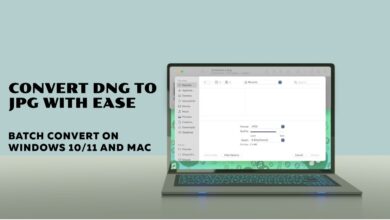How to Use Robotic Process Automation in Business: A Guide for Companies

Robotic Process Automation (RPA) has revolutionized the way businesses function, offering a range of benefits from increased efficiency to improved accuracy. If you’re looking to use RPA in your business, there are some key considerations to keep in mind. In this article, we’ll provide a guide to using RPA in business.
How to Use Robotic Process Automation in Business
- Identify Processes for Automation The first step in using RPA is identifying the processes that can be automated. This involves assessing your business processes and identifying the most repetitive, time-consuming, and error-prone tasks. Processes that involve structured data and manual data entry are good candidates for automation.
- Evaluate RPA Tools Once you’ve identified the processes that can be automated, it’s essential to evaluate RPA tools. There are numerous RPA tools available in the market, each with its strengths and weaknesses. Factors such as ease of use, scalability, and security should be considered when evaluating RPA tools.
- Build a Strong Business Case Before implementing RPA in your business, it’s essential to build a strong business case. This involves identifying the potential benefits of RPA, such as increased efficiency, reduced costs, and improved accuracy, and comparing these to the costs and risks of implementation.
- Design and Develop the RPA Solution Once a strong business case has been established, it’s time to design and develop the RPA solution. This involves working with the RPA vendor to design a customized solution that meets your business requirements. The RPA solution should be thoroughly tested to ensure that it functions as expected.
- Implement the RPA Solution Once the RPA solution has been designed and developed, it’s time to implement it. This involves integrating the RPA solution with existing systems, training employees on how to use the new technology, and developing a plan for ongoing maintenance and support.
- Monitor and Optimize the RPA Solution After the RPA solution has been implemented, it’s important to monitor its performance and optimize it as necessary. This involves tracking key performance indicators such as productivity, accuracy, and costs, and making adjustments to the RPA solution as needed.
What is robotic process automation?
Robotic Process Automation (RPA) is a software technology that enables businesses to automate repetitive, rule-based tasks that are typically performed by humans. RPA uses software robots or bots to perform these tasks, mimicking the actions of a human user. The bots can interact with different software systems, applications, and websites in the same way that a human user would, by using graphical user interfaces (GUI) or application programming interfaces (APIs).
RPA is designed to perform tasks that are typically structured and repetitive, such as data entry, form filling, and report generation. It can be used to automate tasks across various industries, including finance, healthcare, and manufacturing. RPA can help businesses improve their efficiency, reduce errors, and save time and costs by automating tedious and time-consuming tasks. Additionally, RPA can free up employees’ time to focus on higher-value tasks, such as analyzing data and making strategic decisions.
What are the benefits of RPA?
Robotic Process Automation (RPA) can offer a wide range of benefits to businesses that implement it, including:
- Increased efficiency: RPA can automate repetitive, rule-based tasks, allowing them to be completed faster and with fewer errors than if done manually.
- Reduced costs: By automating tasks, businesses can reduce their reliance on human labor, leading to cost savings on salaries and benefits.
- Improved accuracy: RPA bots can perform tasks with a high level of accuracy, reducing the risk of errors that can be caused by human factors such as fatigue, boredom, or lack of attention.
- Better data quality: RPA can improve data quality by reducing errors in data entry and data processing, resulting in more accurate data that can be used for better decision-making.
- Enhanced customer experience: RPA can help businesses respond to customer inquiries more quickly and accurately, leading to improved customer satisfaction.
- Increased productivity: RPA can free up employees’ time to focus on higher-value tasks that require creativity, problem-solving, and critical thinking.
- Scalability: RPA can be easily scaled up or down to meet changing business needs, making it a flexible and adaptable solution.
- Increased compliance: RPA can help businesses ensure compliance with regulations and internal policies by performing tasks consistently and accurately.
Overall, RPA can help businesses improve their processes, reduce costs, and increase productivity, leading to a more efficient and competitive operation.
What are the top RPA tools?
There are several Robotic Process Automation (RPA) tools available in the market, each with its strengths and weaknesses. Here are some of the top RPA tools:
- UiPath: UiPath is a leading RPA tool that is known for its ease of use, scalability, and flexibility. It offers a wide range of features, including a visual designer, drag-and-drop interface, and support for multiple programming languages.
- Automation Anywhere: Automation Anywhere is a popular RPA tool that is known for its scalability, security, and compliance features. It offers a range of features, including drag-and-drop automation, artificial intelligence and machine learning capabilities, and support for multiple operating systems.
- Blue Prism: Blue Prism is another leading RPA tool that is known for its scalability, security, and flexibility. It offers a wide range of features, including a visual designer, drag-and-drop interface, and support for multiple programming languages.
- WorkFusion: WorkFusion is an RPA tool that is known for its advanced analytics capabilities and machine learning features. It offers a range of features, including an integrated development environment (IDE), visual process design, and support for multiple data sources.
- Kryon: Kryon is an RPA tool that is known for its ease of use, scalability, and advanced automation features. It offers a range of features, including visual process recording, drag-and-drop interface, and support for multiple applications.
Ultimately, the choice of RPA tool depends on the specific needs and requirements of the business, including factors such as ease of use, scalability, security, and compliance. It’s essential to evaluate different RPA tools before making a decision to find the best fit for your business.
What are the criteria for choosing RPA tools?
When selecting a Robotic Process Automation (RPA) tool, there are several criteria that businesses should consider to ensure they choose the right tool for their specific needs. Here are some of the most important criteria for selecting an RPA tool:
- Ease of use: The RPA tool should be easy to use and require minimal programming skills to set up and configure.
- Scalability: The RPA tool should be able to scale up or down easily to meet the business’s changing needs.
- Integration: The RPA tool should be able to integrate with other software systems and applications that the business uses.
- Security: The RPA tool should have robust security features to protect sensitive data and prevent unauthorized access.
- Flexibility: The RPA tool should be flexible enough to handle a variety of tasks and work across different platforms and systems.
- Cost: The RPA tool should be cost-effective, with pricing that aligns with the business’s budget and requirements.
- Analytics: The RPA tool should provide analytics and reporting features to help businesses track and measure the performance of their automation processes.
- Support: The RPA tool should come with reliable technical support and training resources to ensure that businesses can get the most out of the tool.
By considering these criteria, businesses can select an RPA tool that is best suited to their needs and requirements, helping them achieve their automation goals efficiently and effectively.
- How to Use Blockchains for Business: A Guide for Executives
- How to Use Augmented Reality in Education: A Guide for Teachers
- How to Create a Successful E-commerce Website: A Step-by-Step Guide
Conclusion
RPA offers numerous benefits to businesses, including increased efficiency, reduced costs, and improved accuracy. To effectively use RPA in your business, it’s important to identify the right processes for automation, evaluate RPA tools, build a strong business case, design and develop the RPA solution, implement the solution, and monitor and optimize its performance. By following these steps, businesses can harness the power of RPA to drive innovation and growth.






